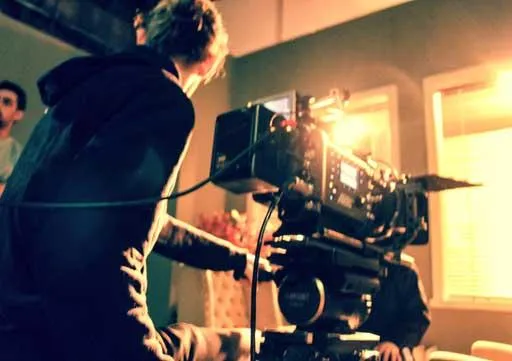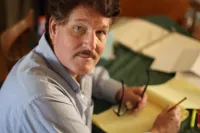Filmmaking
Media, Film, Streaming, Story

Filmmaking
Filmmaking here with articles, tech, story and other stuff to learn, inspire and maybe piss you off as in "Why didn't I know that before!" Believe me, happens to me all day long. Always more to learn and strategize for greater success and Joy in this amazing filmmaking world. I enjoy action films but really good ones in what I like to call "Arthouse Action" which are films like "Die Hard", "Enemy of the State" and others with quick witted words coupled with quicker action. But make no mistake I prize and enjoy the Art of Cinema in many genres and eras.

Origin of Method Acting
Method acting, known as The Method, is a range of rehearsal techniques, as formulated by a number of different theatre practitioners, that seeks to encourage sincere and expressive performances through identifying with, understanding, and experiencing a character's inner motivation and emotions.[2][3] These techniques are built on Stanislavski's system, developed by the Russian actor and director Konstantin Stanislavski and captured in his books An Actor Prepares, Building a Character, and Creating a Role.[4]
Among those who have contributed to the development of the Method, three teachers are associated with "having set the standard of its success", each emphasizing different aspects of the approach: Lee Strasberg (the psychological aspects), Stella Adler (the sociological aspects), and Sanford Meisner (the behavioral aspects).[5] The approach was first developed when they worked together at the Group Theatre in New York and later at the Actors Studio.[4] Notable method actors include Marlon Brando, James Dean, Heath Ledger, Joaquin Phoenix, Christian Bale, Jared Leto, Daniel Day-Lewis, Robert De Niro and Al Pacino.[6]
Stella Adler, an actress and acting teacher whose students included Marlon Brando, Warren Beatty, and Robert De Niro, also broke with Strasberg after she studied with Stanislavski. Her version of the method is based on the idea that actors should stimulate emotional experience by imagining the scene's "given circumstances", rather than recalling experiences from their own lives. Adler's approach also seeks to stimulate the actor's imagination through the use of "as ifs", which substitute more personally affecting imagined situations for the circumstances experienced by the character.
Alfred Hitchcock described his work with Montgomery Clift in I Confess as difficult "because you know, he was a method actor". He recalled similar problems with Paul Newman in Torn Curtain.[20] Lillian Gish quipped: "It's ridiculous. How would you portray death if you had to experience it first?"[21] Charles Laughton, who worked closely for a time with Bertolt Brecht, argued that "Method actors give you a photograph", while "real actors give you an oil painting."[22]
During the filming of Marathon Man (1976), Laurence Olivier, who had lost patience with Method acting two decades earlier while filming The Prince and the Showgirl (1957), was said to have quipped to Dustin Hoffman, after Hoffman stayed up all night to match his character's situation, that Hoffman should "try acting ... It's so much easier."[23] In an interview on Inside the Actors Studio, Hoffman said that this story had been distorted: he had been up all night at the Studio 54 nightclub for personal rather than professional reasons and Olivier, who understood this, was joking.[24]
Strasberg's students included many prominent American actors of the latter half of the 20th century, including Paul Newman, Al Pacino, George Peppard, Dustin Hoffman, James Dean, Marilyn Monroe, Jane Fonda, Jack Nicholson, and Mickey Rourke.[25]
I had the opportunity to meet and work with Stella Adler who was quite a force of nature in person and up on stage teaching. She had to use a cane but boy could she project her own forceful personality to her students!
